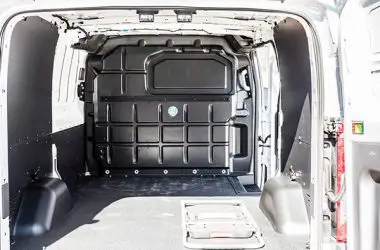The EPA began rating vehicle fuel economy in the 1970s amid the 1973 oil embargo. The ratings were established to help consumers compare vehicles and make informed choices when purchasing new cars and trucks. The EPA ratings estimate a vehicle’s fuel economy – how many miles it can travel on a gallon of fuel. Ratings are provided for city and highway driving, based on standardized government tests.
Over the years, the EPA has updated and modified their testing procedures to better reflect real-world driving conditions. However, the original purpose remains unchanged – providing consumers a reliable comparison tool for fuel economy across different vehicles. According to FuelEconomy.gov, “the EPA fuel economy estimates are meant to provide a reliable comparison of new vehicles to help you choose the most fuel-efficient vehicle that meets your everyday needs” (https://www.fueleconomy.gov/).
How Tests Are Conducted
The EPA conducts fuel economy tests on vehicles to determine the city and highway mpg ratings. According to the EPA’s website, “EPA tests vehicles by running them through a series of driving routines, also called cycles or schedules, that specify vehicle speed for each point in time during the test” (https://www.fueleconomy.gov/feg/fe_test_schedules.shtml).
There are several different test cycles used:
- City test – Vehicle is tested in stop-and-go driving to simulate city conditions
- Highway test – Vehicle is tested at higher speeds up to 80 mph to simulate highway driving
- US06 test – Aggressive acceleration and speeds up to 80 mph
- SC03 – Air conditioning test at various speeds
- Cold temperature test – Vehicle tested after sitting overnight in cold temperatures
These various tests allow the EPA to simulate different real-world driving scenarios. The city and highway tests receive the most weight in determining the final mpg estimates.Vehicles are tested on a dynamometer in a controlled lab environment to ensure consistent and repeatable results.
City vs Highway Ratings
The EPA fuel economy tests produce two different MPG ratings – city and highway. City MPG estimates fuel efficiency when driving in urban stop-and-go conditions, while highway MPG estimates efficiency when driving at faster steady speeds (Car and Driver). The EPA testing procedures are designed to simulate these different real-world conditions.
For city MPG, the test focuses on start-and-stop driving with more frequent acceleration, braking, and idling. The maximum speed is only 48 mph. For highway MPG, the test models a mix of steady speeds and acceleration, with a top speed of 60 mph (Capital One). This explains why highway mileage ratings are almost always higher than city ratings for a given vehicle.
The EPA ratings provide a standardized estimate for consumers to compare the relative fuel efficiency of different vehicles for typical city and highway driving.
Adjusted vs Unadjusted Ratings
The EPA fuel economy ratings shown on new vehicle window stickers represent adjusted or “real-world” MPG estimates. Adjusted ratings differ from unadjusted fuel economy values, which are the raw test results measured under controlled laboratory conditions.
Unadjusted fuel economy is derived from tests performed on a dynamometer in a lab following specific EPA protocols. This measures the maximum possible fuel efficiency of a vehicle in ideal conditions [1]. However, the EPA then adjusts these figures downward to better reflect real-world driving behavior and conditions.
According to the EPA, adjusted fuel economy ratings are about 20-25% lower than unadjusted values on average. For example, a vehicle that achieved 30 mpg city in laboratory tests would likely be rated around 24 mpg city by the EPA after adjustments. This “adjustment factor” accounts for differences like quicker acceleration, higher speeds, colder weather, and use of air conditioning [2].
The EPA believes adjusted ratings give potential buyers a more realistic estimate of real-world fuel economy. However, some argue unadjusted ratings better represent a vehicle’s maximum efficiency and adjusted values are too conservative [3]. Ultimately, actual mileage depends greatly on individual driving behavior.
How Ratings Are Calculated
The EPA uses a series of tests called the “FTP-75” to determine a vehicle’s city and highway fuel economy ratings. This involves putting the vehicle through various driving cycles on a dynamometer (a machine that simulates real-world driving conditions) while carefully measuring fuel consumption.
There are three phases of the FTP-75 testing:
- The city test mimics stop-and-go driving with an average speed of 20 mph
- The highway test simulates steady-speed highway driving at an average speed of 48 mph
- The US06 test represents aggressive high-speed, high-acceleration driving
The city test makes up 55% of the composite FTP-75 test, the highway test makes up 10%, and the US06 test makes up the remaining 35%. The vehicle’s performance during these specific segments is used to calculate the final EPA city and highway mpg estimates.
The city estimate comes directly from just the city test portion. But the highway estimate is calculated from a combination of the city, highway, and US06 test results, with the highest weighting on the dedicated highway test segment. This method aims to capture a mix of real-world driving conditions.
In addition to the city and highway ratings, vehicles may also receive a “combined” mpg estimate which is a weighted average of 55% city and 45% highway driving.
Why Your Real-World MPG May Vary
There are many factors that can cause the fuel economy you experience in the real world to differ from EPA estimates. According to Edmunds (1), some key reasons include:
– Aggressive driving and speeding – The EPA test is conducted at speeds below 60 mph, so faster highway speeds will reduce mpg.
– Cold weather and use of climate controls – Colder temps and running heat require more fuel.
– Short trips and frequent stops – Your engine may not reach optimal operating temperature.
– Heavy cargo loads – Extra weight reduces fuel economy.
– Terrain and elevation – Hilly routes and high elevation driving impacts mpg.
– Tire pressure – Under-inflated tires create more rolling resistance.
The EPA provides estimated city and highway mileage to reflect different driving conditions. However, your personal habits, vehicle maintenance, weather, and other factors also influence the gas mileage you’ll achieve (2).
Customer Expectations
Managing customer expectations around EPA estimates is an important consideration. Studies have found that there is often a gap between EPA ratings and real-world fuel economy that customers experience. According to a Consumer Reports survey, 35% of car owners said fuel economy has the most room for improvement in their vehicle. This suggests many customers desire better real-world MPG than current EPA estimates.
Research also shows that consumers undervalue fuel savings from higher EPA ratings. A MIT study found that market demand does not fully factor in long-term gas savings from more fuel efficient vehicles. However, the National Academies Press notes that customers are more likely to buy efficient vehicles when gas prices are high. This indicates customer expectations are sensitive to fuel costs.
Overall, managing customer expectations involves better aligning EPA estimates with real-world conditions. It also requires educating customers on the value of fuel savings over a vehicle’s lifetime, not just when gas prices fluctuate. With improved expectations, customers can make better informed decisions when purchasing vehicles.
Recent Changes to Testing
The EPA has updated its fuel economy testing procedures several times over the past few decades to better reflect real-world driving conditions. Some key changes include:
In 2008, the EPA introduced a new five-cycle test method that aimed to better account for higher speeds, harder accelerations, hotter temperatures, and greater air conditioner use compared to the old test method. This change lowered the MPG ratings for all vehicles. (Source)
In 2017, the EPA updated labeling calculations to incorporate new driving patterns, speeds, temperatures, and payloads. This better aligned test values with real-world results. (Source)
In 2020, the EPA adjusted ratings for over a million vehicles to account for factors like higher speeds and more aggressive driving. This correction aimed to rebuild trust in the ratings. (Source)
The EPA continues to modify test cycles and calculations to keep fuel economy labels as accurate as possible. But some real-world factors are difficult to simulate, so ratings are still estimates. The testing improvements over time help provide consumers with better mileage information when choosing a new vehicle.
Ratings in Other Countries
Fuel economy testing varies significantly between countries. While the EPA test is used in the United States, other countries utilize different driving cycles and testing methodologies.
For example, Europe uses the World Harmonized Light Vehicles Test Procedure (WLTP), which replaced the older New European Driving Cycle (NEDC) in 2017. The WLTP aims to better represent real-world driving conditions with more acceleration, braking, and higher speeds compared to the NEDC [1]. Studies have shown a 20-30% difference between NEDC and real-world fuel economy [2].
Japan uses the JC08 cycle, which involves faster accelerations and more aggressive driving compared to the EPA cycle. This results in lower fuel economy ratings in Japan versus the United States for the same vehicle models.
Overall, while the EPA test provides a standardized methodology for the U.S. market, ratings vary significantly globally based on local test procedures. The EPA test tends to be less aggressive than other global tests, often resulting in higher fuel economy ratings.
The Future of EPA Ratings
The EPA is continuously working to improve the accuracy of its fuel economy testing and ratings. Here are some potential updates and changes being explored:
The EPA may add more “real-world” driving conditions to its testing cycles. Currently testing focuses on city and highway driving. Adding more aggressive acceleration, braking, and higher speeds could better reflect real-world conditions (Highlights of the Automotive Trends Report).
The EPA may account for factors like air conditioning usage and payload weight in ratings. Currently these are not accounted for but can significantly impact real-world fuel economy (2022 EPA Automotive Trends Report).
The EPA may adjust or remove the “adjustments” currently made to ratings, for example the 10% highway adjustment factor. This could provide ratings that more closely align with real-world experience (2023 EPA Automotive Trends Report).
The EPA continues to monitor developments in electric vehicle testing methods to account for factors like battery degradation and regenerative braking. As electrification increases, the testing procedures may be updated to provide more representative ratings.



